12 Most Common Types of Butterflies in Iowa (With Pictures)
-
Pete Ortiz
- Last updated:
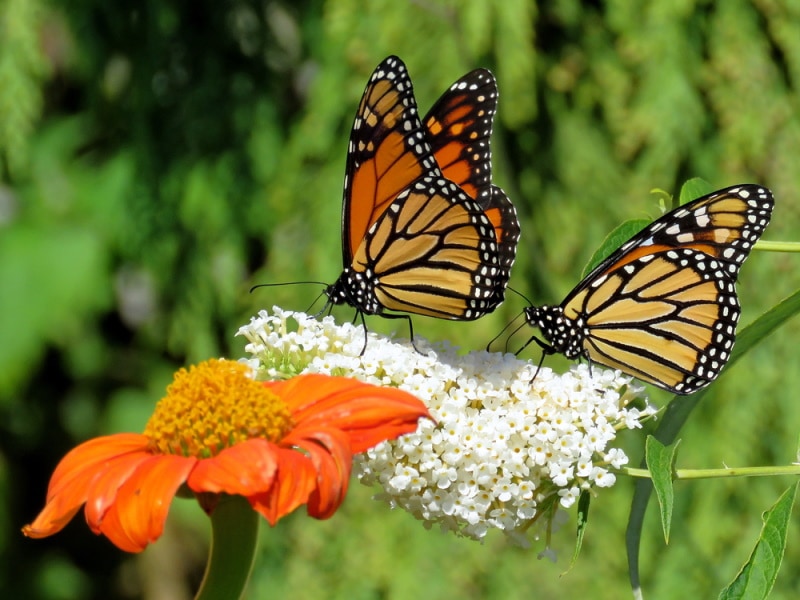
Iowa is a very rural state that is home to rolling fields, acres of farmland, and plenty of gardens. As a rural location, there is plenty of opportunity to see wildlife. One of Iowa’s best features is the number of butterflies that call the state home. Iowa has many beautiful and unique butterflies that can be frequently spotted around flowers in local gardens. You can see everything from small white butterflies to large, elaborately patterned butterflies. If you keep a sharp eye out, you can spot a number of stunning butterflies in Iowa.
Here are 12 of the most common types of butterflies in Iowa today.
The 12 Most Common Types of Butterflies in Iowa
1. Monarch
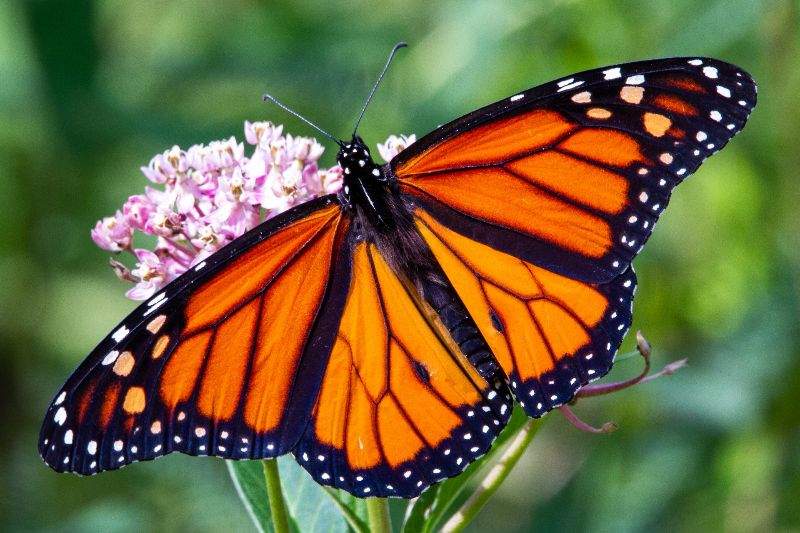
| Scientific name: | Danaus plexippus |
| Type: | Milkweed |
| Color: | Orange and black |
The monarch butterfly is one of the most recognizable butterflies in the world thanks to its large size and stunning tiger pattern. Monarch butterflies can be found in Iowa and throughout much of the continental United States. Unfortunately, unlike most insects, the monarch butterfly is endangered.
The monarch butterfly is unique since it is intimately tied to the milkweed plant. Without milkweed, monarch butterflies cannot survive and thrive. As human development continues, it has damaged the natural habitat of the monarch butterfly. Other butterflies can adapt to use other common plants for breeding and feeding, but monarchs are tied entirely to milkweed. If you want to try to attract and help monarch butterflies, you should look up how to plant and care for a milkweed garden.
2. Viceroy
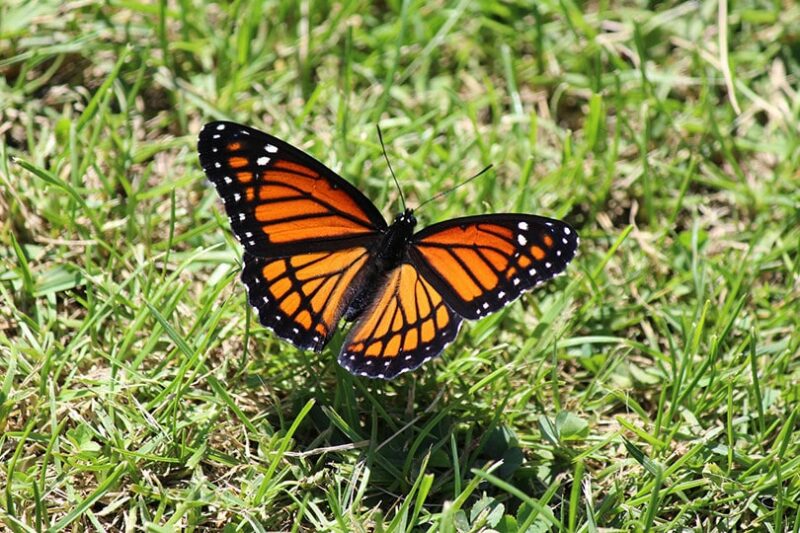
| Scientific name: | Limenitis archippus |
| Type: | Brush-footed |
| Color: | Orange and black |
The viceroy butterfly is often mistaken for the monarch butterfly because they are almost identical in appearance. The viceroy butterfly is not a milkweed butterfly but rather a brush-footed butterfly. The viceroy mimicked the monarch because milkweed makes monarch butterflies toxic to eat, while the viceroy is non-toxic.
Fortunately, the viceroy butterfly is not endangered. It is of the least concern when it comes to conservation status. If you think you have a large number of monarchs around, you could actually have viceroy butterflies, as they are more common than monarch butterflies. Viceroy butterflies can be found throughout Iowa during the spring and summer.
3. Red Admiral

| Scientific name: | Vanessa atalanta |
| Type: | Brush-footed |
| Color: | Red and black |
The red admiral butterfly is characterized by a stunning blend of colors. Both the topside and underside of its wings contain a mixture of reds, blacks, grays, browns, and blues. The red admiral is one of the few types of butterflies that enjoys feeding off of rotting fruit.
The red admiral is also unique in that the butterfly is territorial. Each male stakes out a claim to a specific plot of land and lures females in. Female red admirals will only mate with males that have successfully staked a claim to the appropriate territory. That is a very unique behavior for butterflies.
4. Painted Lady
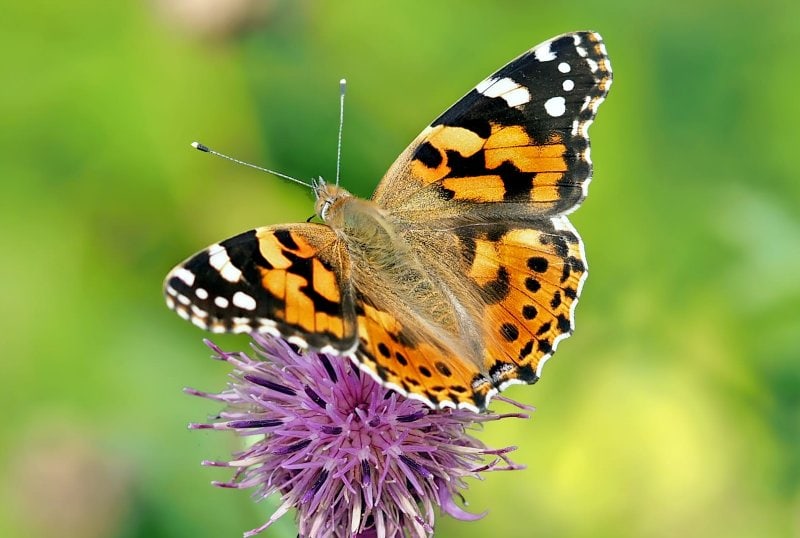
| Scientific name: | Vanessa cardui |
| Type: | Brush-footed |
| Color: | Orange, black, gray, and brown |
The painted lady butterfly is the most widely distributed species of butterfly in the world. This butterfly can be found on five of the seven continents, including North America, Europe, Asia, Africa, and Australia. It is no wonder it can be found in rural Iowa. The pattern of the painted lady is unique and features multiple colors resembling makeup, hence the name.
The pokey caterpillar form of the painted lady can frequently be found feasting on thistle plants. The painted lady was once called the cosmopolitan butterfly since it was discovered that the butterfly is the most widely distributed in the world.
5. American Painted Lady
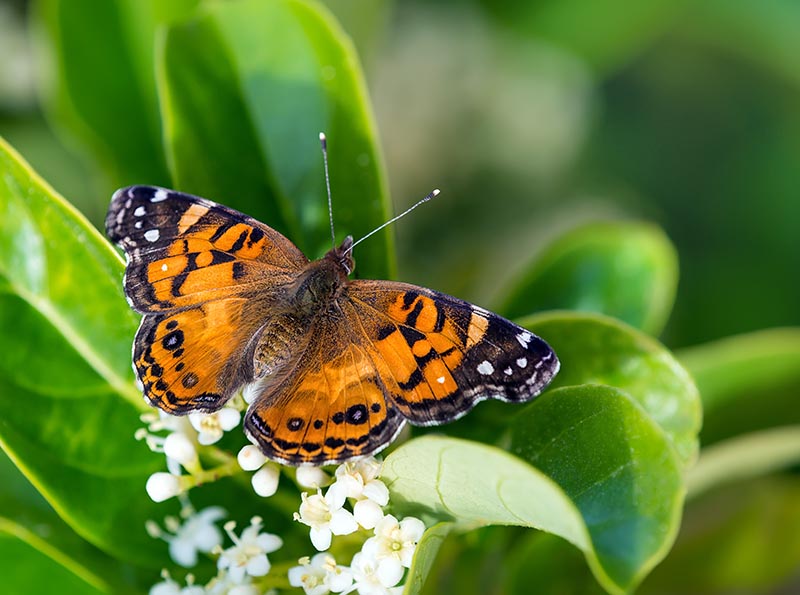
| Scientific name: | Vanessa virginiensis |
| Type: | Brush-footed |
| Color: | Orange and black |
The American painted lady, or just the American lady, is the American cousin of the standard painted lady. This butterfly has a relatively nondescript upper side to its wings that feature orange and black patterns. However, the underside, or ventral side, has four distinct eyespots that are very distinguishable.
Unfortunately, it can be hard to spot the underside of a butterfly’s wings to identify this butterfly as the American painted lady. The American painted lady can be found throughout North America in all of its life stages. It does not migrate but is native throughout the continent, including the state of Iowa.
6. Tiger Swallowtail
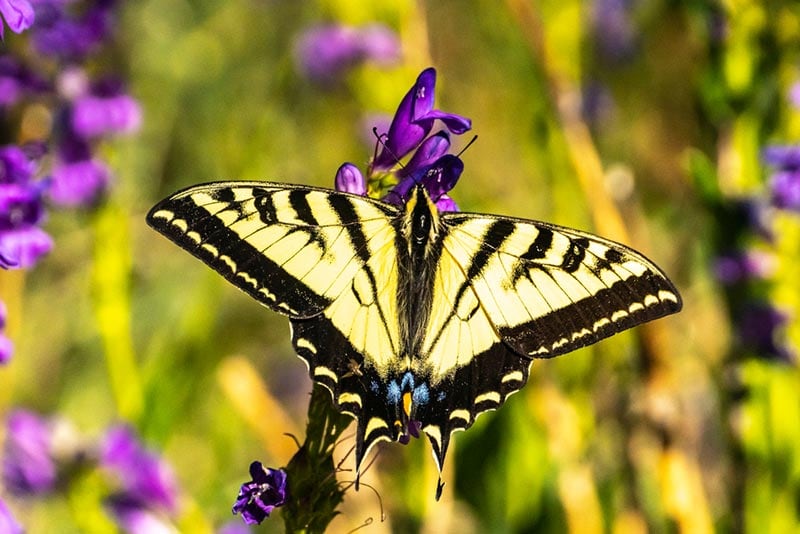
| Scientific name: | Papilio glaucus |
| Type: | Swallowtail |
| Color: | Yellow and black |
The tiger swallowtail is named for its striking pattern. Its large wings are dominated by yellow and black stripes. Tiger swallowtails are easily spotted in Iowa and are extremely recognizable. Tiger swallowtails like to feed on sunflowers, so planting sunflowers can be a great way to get these beautiful insects into your yard.
The tiger swallowtail is one of the most spotted butterflies in the United States due to its size, appearance, and long season. Tiger swallowtails can be spotted flying for over six months, from early spring through the end of autumn.
7. Giant Swallowtail
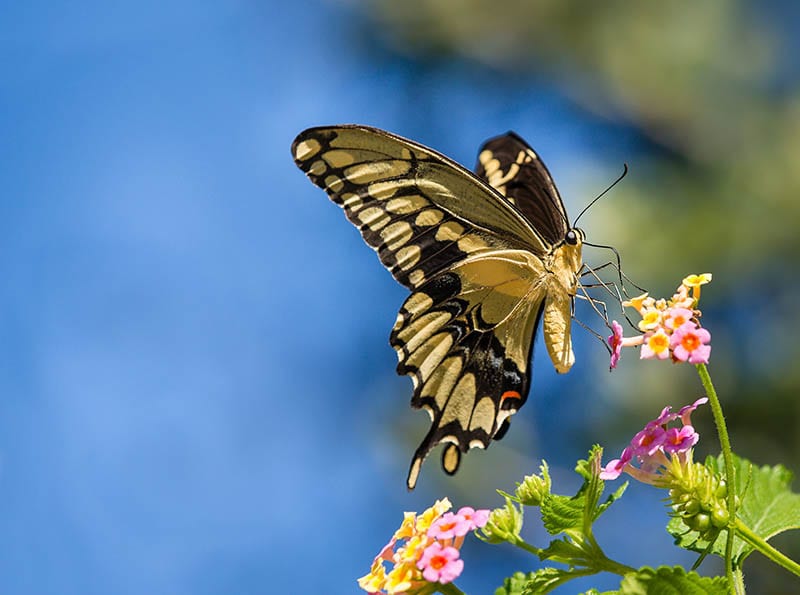
| Scientific name: | Papilio cresphontes |
| Type: | Swallowtail |
| Color: | Black and yellow |
The giant swallowtail butterfly is the largest butterfly in North America. It has a wingspan that can reach up to six inches which is roughly five times larger than many smaller butterflies. These massive butterflies are a sight to behold, and they can be spotted throughout Iowa. Giant swallowtails prefer open land and low ground, making Iowa a perfect place for them to thrive. The giant swallowtail population is not at risk.
One of the ways this butterfly manages to thrive into adulthood is the fact that the caterpillar form looks remarkably like bird poop. If you spot a giant swallowtail on a leaf, it is extremely easy to mistake it for dung which helps them remain undisturbed. The easiest way to identify this butterfly is by its enormous size.
8. Eastern Black Swallowtail
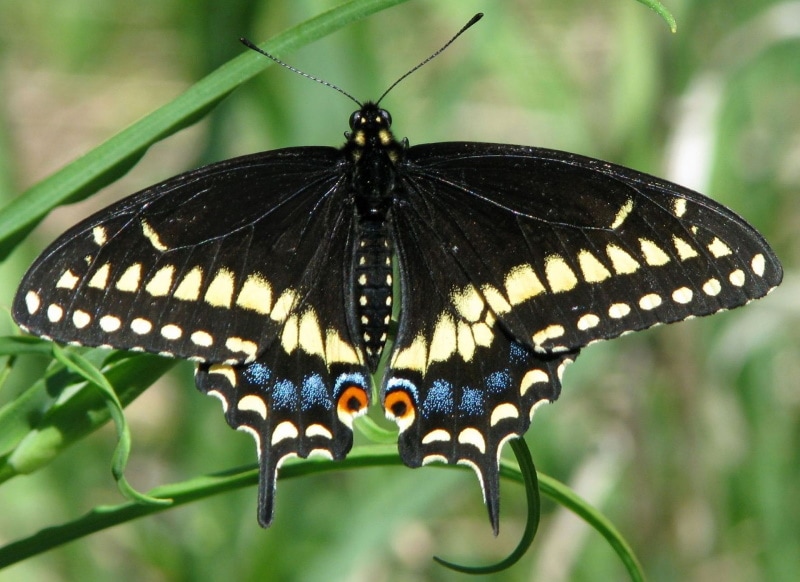
| Scientific name: | Papilio polyxenes |
| Type: | Swallowtail |
| Color: | Mostly black, yellow, and blue |
The eastern black swallowtail is a large example of a classic swallowtail butterfly (though not as large as the giant swallowtail.) The eastern black swallowtail can be found throughout the eastern half of the United States and is actually the state butterfly of both New Jersey and Oklahoma. (Iowa does not have a state butterfly.)
This swallowtail has glossy black wings with either yellow or blue accents. It is very striking and easy to spot when flowers are in bloom. The caterpillar of the eastern black swallowtail likes to feed on the popular plant Queen Anne’s Lace, so if you plant some of that in your garden you have a chance of attracting eastern swallowtails for the season.
9. Buckeye

| Scientific name: | Junonia coenia |
| Type: | Brush-footed |
| Color: | Brown, tan, orange with black spots |
The buckeye butterfly, also called the common buckeye, is a small butterfly with a stunning pattern on its wings. At first glance, this butterfly looks more like a moth than it does other butterflies due to its coloring and pattern. The buckeye butterfly can be found throughout the eastern half of the United States, and it likes open spaces with little vegetation, which is why it is often found in Iowa.
The adult buckeye butterfly can be found frequenting common Iowa plants such as aster, knapweed, milkweed, and stonecrop. If you want to attract this unique butterfly to your garden, you should plant yellow plants as they appeal to the buckeye butterfly.
10. Great Spangled Fritillary
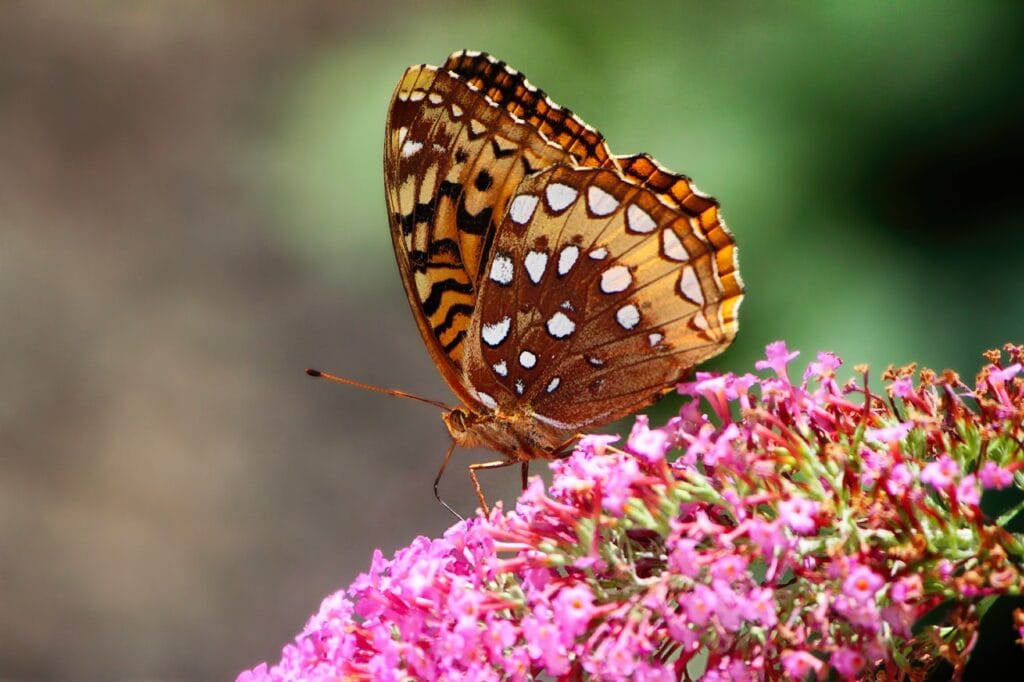
| Scientific name: | Speyeria cybele |
| Type: | Brush-footed |
| Color: | Brown, tan and white |
The great spangled fritillary is a perfect example of a classic brush-footed butterfly and typical fritillary. This butterfly inhabits most of the United States, including Iowa. The great spangled fritillary is a larger butterfly with a wingspan that can approach four inches in size.
Interestingly enough, the caterpillar of the great spangled fritillary only feeds on violets and usually only feeds at night. The great spangled fritillary is less picky about what it feeds on than its caterpillar form and can be seen frequenting a variety of nectar-producing plants.
11. American Copper
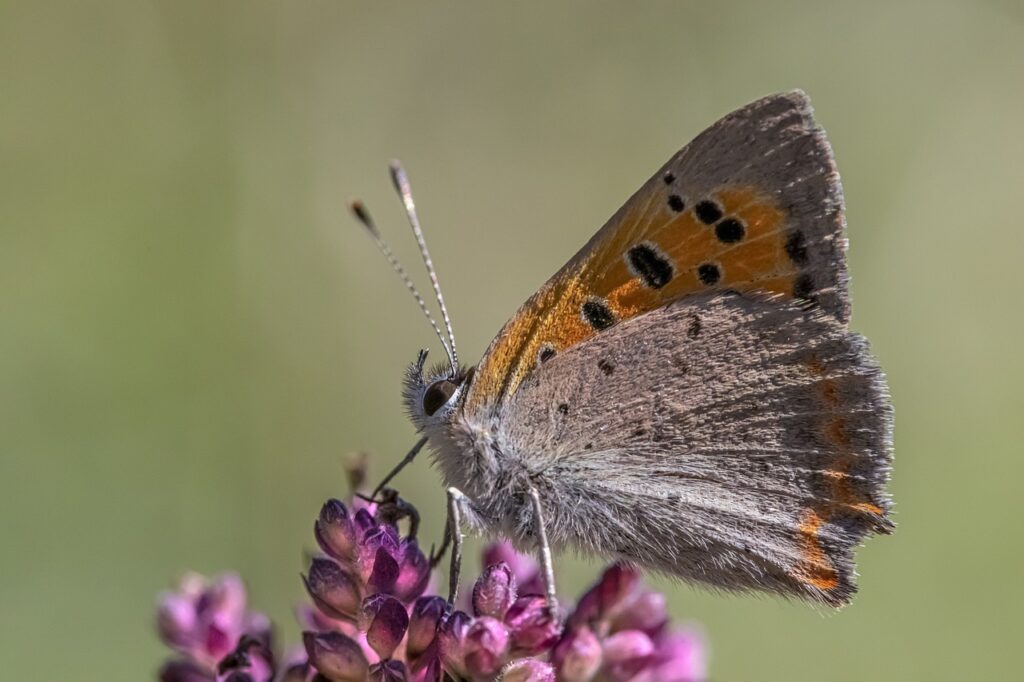
| Scientific name: | Lycaena phlaeas |
| Type: | Gossamer-wing |
| Color: | Orange and gray |
The American copper butterfly is a small, dainty, gossamer-winged butterfly that is frequently found in the fields of Iowa. The American copper butterfly can be found across the globe and is prized for its interesting appearance. It has a vibrant orange color on the top of its wings and a dusty gray-orange color on the underside of its wings.
Once you spot an American copper, it becomes easy to see them again due to its unique appearance. While the butterfly is striking, the caterpillar form is less so. The caterpillar of the American copper is often mistaken for a slug due to its flat shape and ruddy color. These butterflies are often seen manically darting in and out of flowers during the summer.
12. Gray Copper
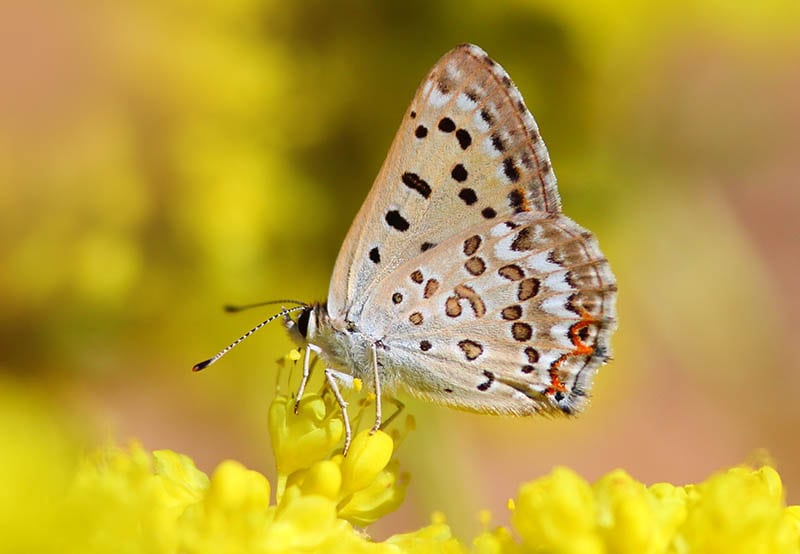
| Scientific name: | Lycaena dione |
| Type: | Gossamer-wing |
| Color: | White, gray, black, and orange |
The gray copper butterfly is named for its unique color pattern. The butterfly is mostly gray with black spots on the wings. The edge of its wings sport an attractive copper flair. A stripe of bright orange color breaks up the gray color and gives it a unique appearance.
The gray copper butterfly inhabits a stretch of land going from southern Canada down through Iowa into northern Texas. The butterfly frequents flat prairies, like the ones commonly found in Iowa. Gray copper butterflies are small in size, growing a maximum wingspan of just 1.5 inches.
Conclusion
These are 12 of the most common types of butterflies that can be found throughout the state of Iowa. There are small dainty butterflies, territorial butterflies, and some of the largest butterflies in the world to be found. Attracting butterflies to your garden should be fairly simple in Iowa. Identifying them and tracking them down could be a little harder. This guide will help familiarize you with the most easily spotted butterflies in Iowa.
Featured Image Credit: Emkaplin, Shutterstock
Contents


